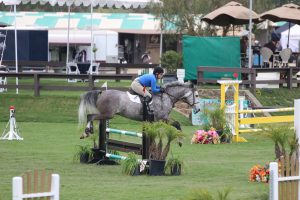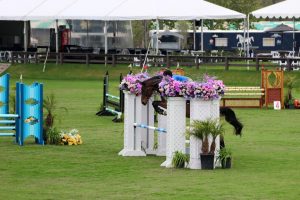Bourcier Discusses Show Jumping: In this event, Jumpers jump bright colored fences designed in a technical course by a licensed course designer.
The horse is judged on objective faults – which are refusals, rails down, exceeding the time allowed, off course, or falls. Our modern jumper classes are civilian models based on cavalry tests and competitions, which took off after cavalries were disbanded. Jumpers are judged based on the table selected from the USEF jumper rulebook. Most often, this will be Table 2, which are classes the require all horses tied, jump off. A jump off is a short course against the clock. The fastest horse with the least faults wins.
Judging
For example, Table II section A means the horses that are tied for first, leave the ring and come back in the original order for the jump off. Table II section B means any horse that completes the first round without faults remains in the ring and upon a signal from the judge does the jump off. Table II section C means the jump off is built into the course and any rider clear in the first part continues directly into the jump off. It is therefore critical to know the tables and to find on the course map, at the entry to the ring, how the class is being judged.
In The Arena
After the horse and rider enter the arena, a ring a tone will sound indicating that the horse should start. It is considered a mistake to cross the starting line in the direction of the first fence before the tone. Starting before the tone results in elimination, and if the judge thinks a rider is starting he/she may disqualify the rider.
There are 45 seconds allowed for the rider to prepare and cross the starting line. Almost always crossing electronic timers which starts the time. On the posted course there is the TA (time allowed), and exceeding the time allowed results in penalties at the rate of 1 a quarter second. After the last jump there is a finish line with another set of timers. The judge also times the class in case a timer fails. There is an appendix in the rule book that indicates an MPM speed. The course is measured, and the time allowed set. The judge monitors the first three horses time, and can adjust the TA if needed.
The courses become harder and bigger with each division. Starting at .60m and finishing at the five start Grand Prix at 1.60m+. Classes are further divided by age, ability, and owner-rider. Course designers create a track with 10 to 15 jumps on it left and right turns, combinations, striding questions, airy jumps that require the horse to be very careful not to touch them and solid jumps that test the horses’ bravery. At the rated level, prize money is given rather than points. The horse with the most winnings is the champion.






